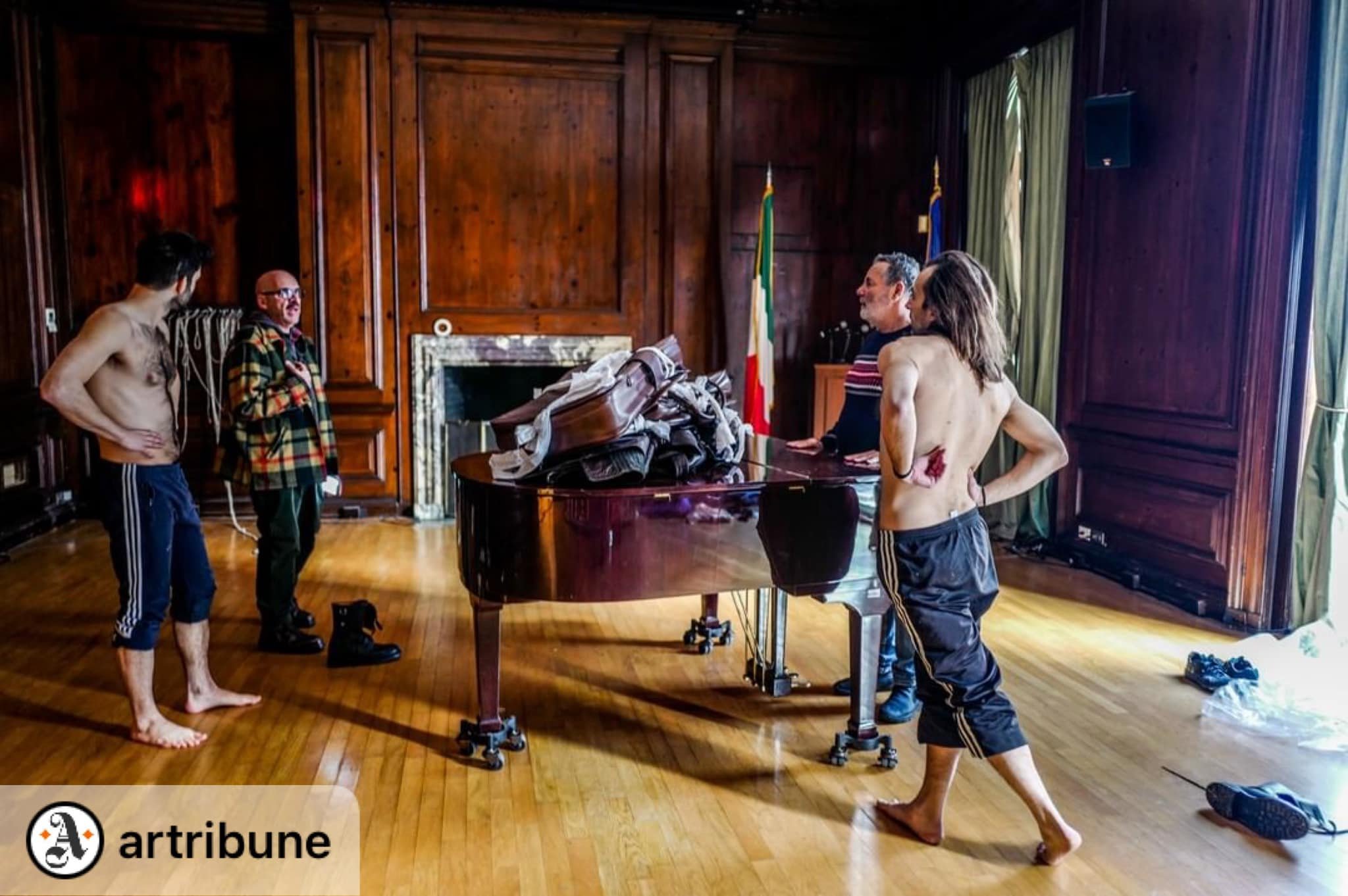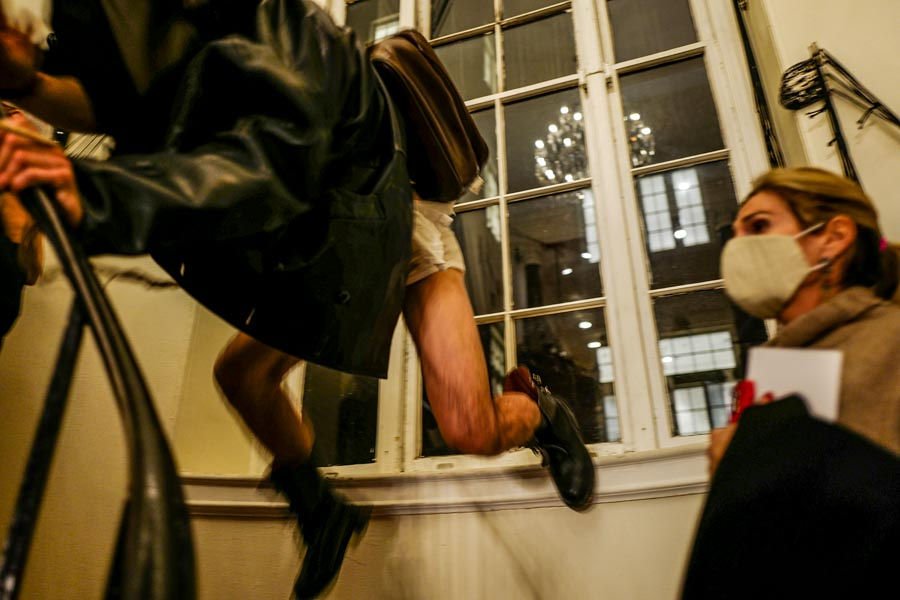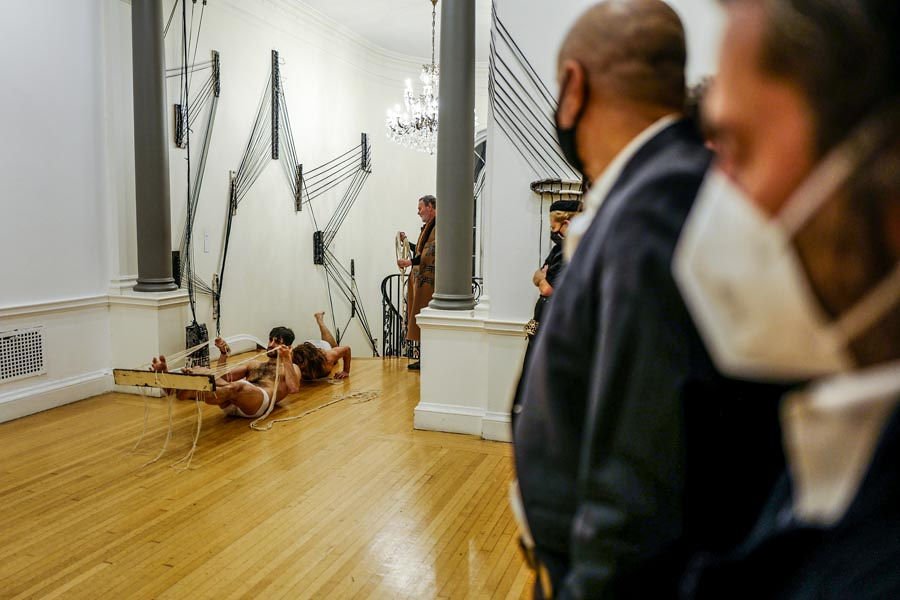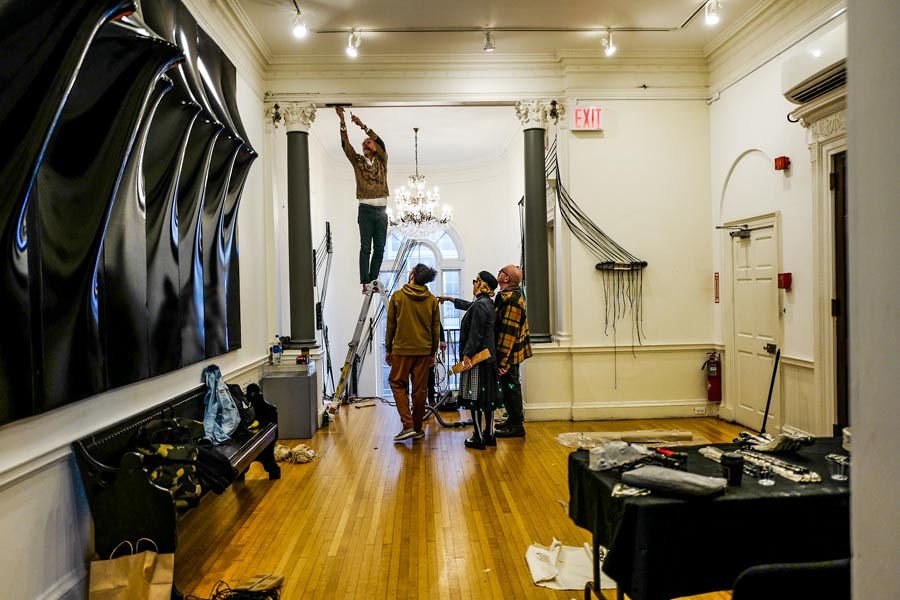by Micaela Roberta Tenace
(Translation )
MY HEART I’M SUFFERING WHAT CAN I DO FOR YOU? IS THE ENIGMATIC TITLE OF THE FIRST THEATER PERFORMANCE BY SARDINA BORN DESIGNER, WRITER, AND DIRECTOR OF THE PIECE, ANTONIO MARRAS CREATES HIS PERSONAL POINT OF CONTACT BETWEEN FASHION AND THEATER: THE STORY IS AN EMOTIONAL PUZZLE OF FEARS AND MEMORIES
Darkness. The rhythmic beat of a heart, the white and primitive sound we hear in our mother’s womb. A sound “bum bum” that awakens different sensations in whoever is listening to it.
And then a dim light that goes on and off in sync with the ancient beating of a heart.
This is the first scene of My heart I’m suffering what can I do form you?, the first theatrical piece written and directed by designer Antonio Marras and produced by Valeria Orani, artistic director of 369gradi.
The story is paced by a sort of creative ECG in a rhythmic alternation of 14 scenes going from slow to fast, calm to anxiety, bradycardia to tachycardia,. A debut for the creative director, that we met after the premiere at Teatro Massimo in Cagliari, waiting for the dates in Milan, Rome, Bari and probably New York in 2019/2020.
«This is the story of a detachment, cutting, amputation. Of pain, separations and of non-return. About the impossibility to communicate with the person who is at your side. My intention was to surface moments that we have decided to hide or somehow to forget. This is what I asked the actors to do after I explained to them the text: I didn’t want them to simply play, I wanted them to find episodes inside of them that could awaken these types of emotions. Everyone had to become like an archaeologist of their own soul.
«I’m very attached to these little songs, I remember when I went with my sisters to the musicals. My memory, in general, is not great but I don’t know why I can easily remember song lyrics. There are refrains that get inside my head and don’t go away. The lyrics of this song, express very profound things: it enquires about the inability to dig inside our heart, to govern it and to point it out towards what we desire. Because our damned heart tends to just do what it wants ».
«I had the need to express something. I have listened, understood, received, remembered things that belonged to me or came to me from other sources. I have processed everything and put them back together to build this work: passages from Italo Calvino and Shakespeare, woven into a loom inspired by Dino Buzzati and divided by season. I was so lucky to meet some of the best actors of contemporary Italian theater: Ferdinando Bruni – founder and director of Teatro Elfo in Milan - Marco Vergani and Federica Fracassi. Simonetta Gianfelici, a beautiful ex-top model who has often worked with Marras at fashion shows is also on stage. I did no task the actors to act like they normally do but to absorb and process everything. In short to tailor-made their own part ».
«Yes, clothes also play a very special role on stage. They are never worn they are just placed on the body, badly fastened with leather straps. On stage, there is no need for costumes. Everybody wears underwear, naked, clothes are out of place. In the final scene where couples of brides and grooms entwine and merge their bodies – girls wear real wedding dresses, purchased at vintage markets. This was my “perversion” with thousands of clothes in my collections I went to look for clothes with a history, which had been worn by real brides and carried heartbreaking emotions with them. »
Your performance looks like a living work of art ...
«Definetly, this work is for others to “wear” in different ways. I have always thought that if this project of mine would have become a traveling show, I would have asked somebody local to be in it. Here in Sardinia, I found Vincezo Puxeddu – a dancer and a therapist who, a year ago, had an accident that caused him the amputation of one leg. I also met Elena Ledda who is wonderful when she goes from the singing of Sardinian lullabies "Cantu a Dillu" to the rosary recited by hired mourners at deathbeds. In the scene they play together, Vincenzo enters supported by a mamuthone (a mask of the Sardinian Carnival) covered in sheep wool carrying a typical object called "carriga" (a sort of bouquet made of old bells), moving in an intense and desperate kind of two men walk ».
What is the role of Valeria Orani?
«I had never met her in person before, but she always thought we should do something together. So when she was asked to produce this idea of mine, she did not think twice and she embraced it body and soul. ».
Are there analogies between the creation of a fashion collection and of a theater piece?
«When I create I always need a story, a canvas, a tale from where to start. It doesn’t matter if it is a book, a character, a photo: from Gramsci to the Sardinian bandit woman, Paska Devaddis, to the geishas. My wife Patrizia helps me with this, she is very good: her contribution has been important also in this new path. ».














